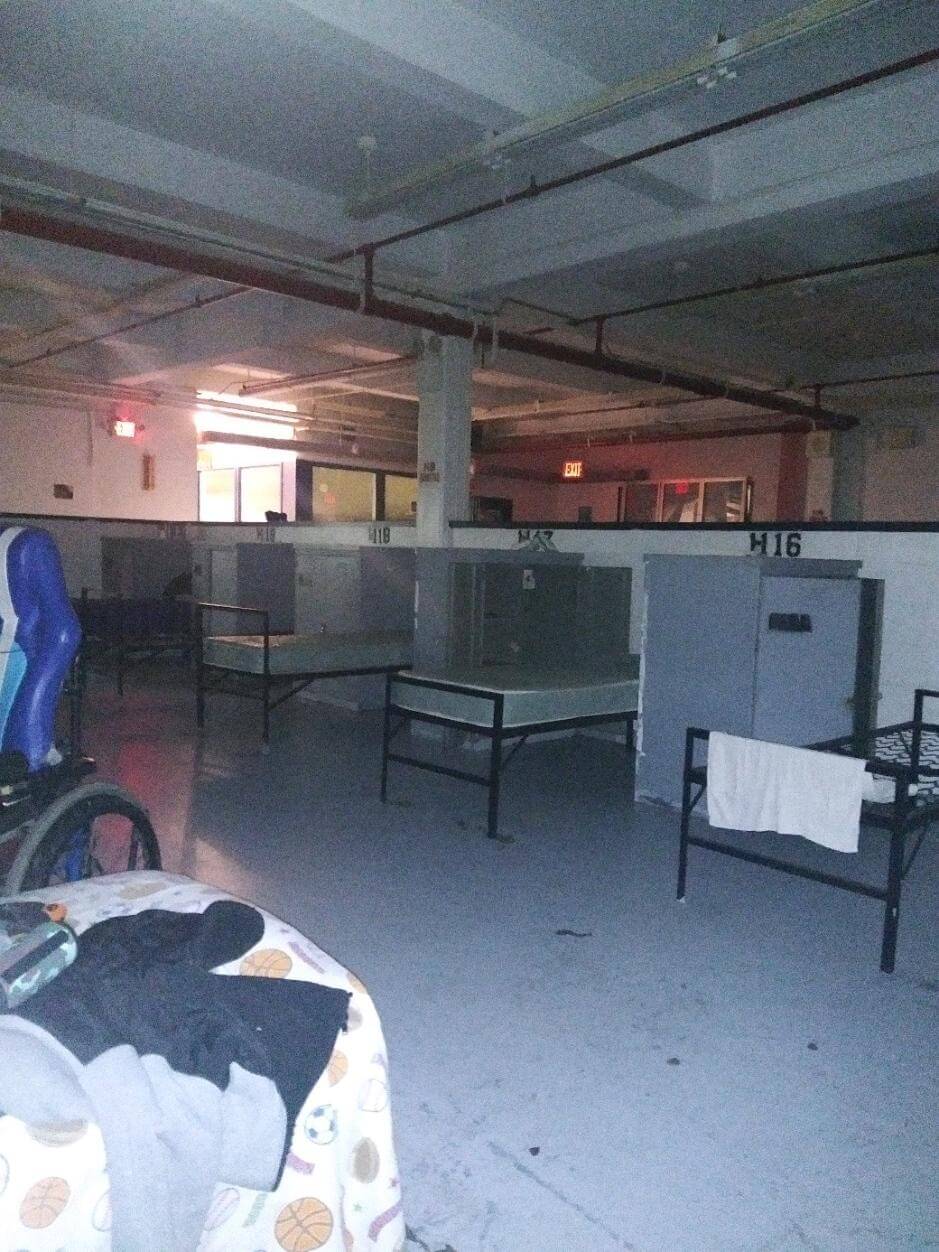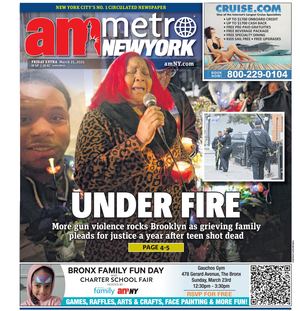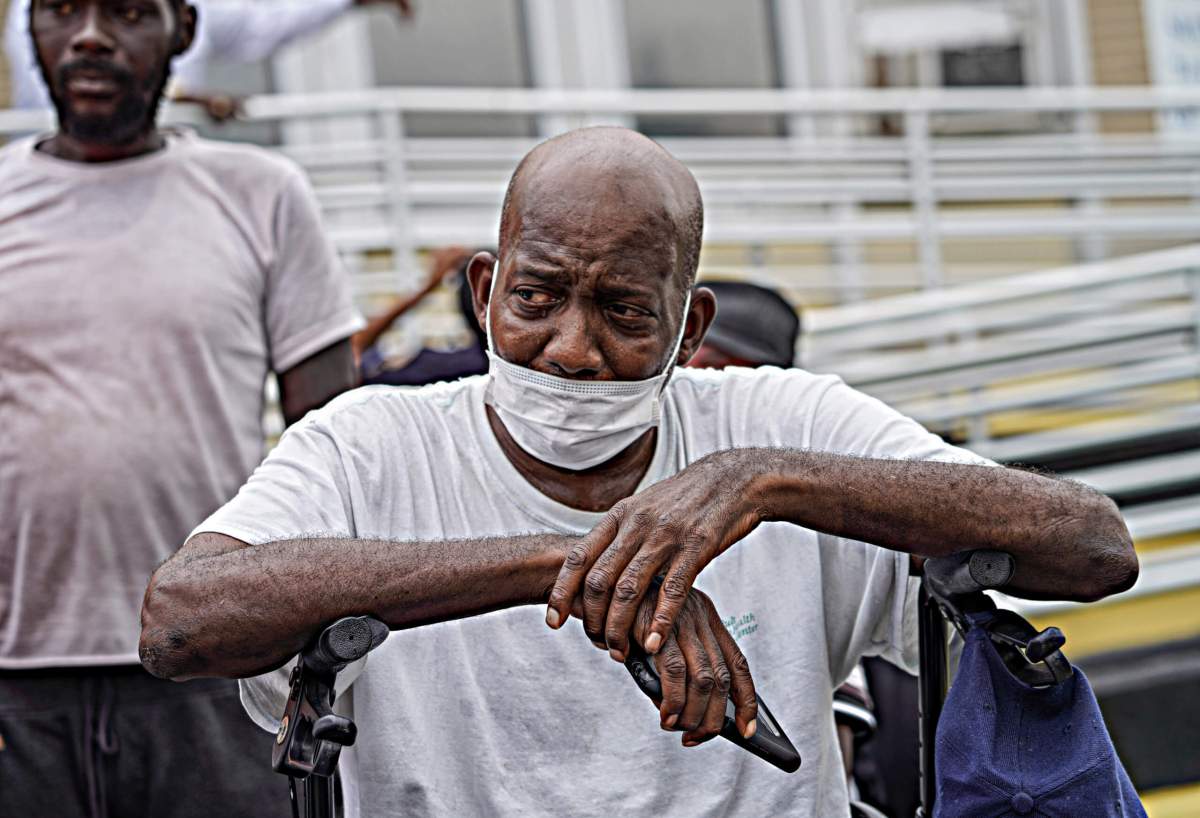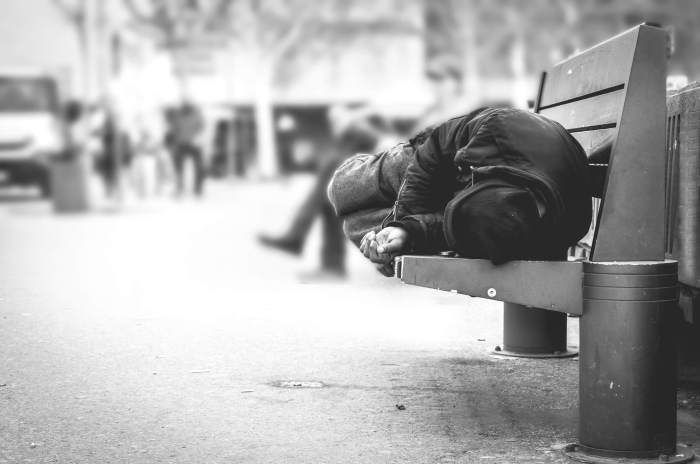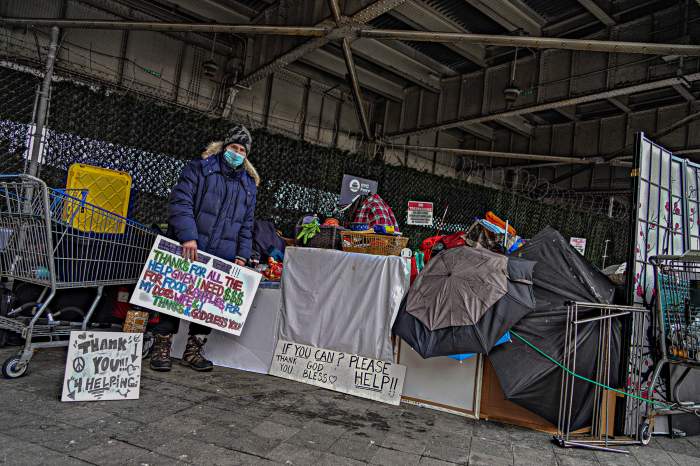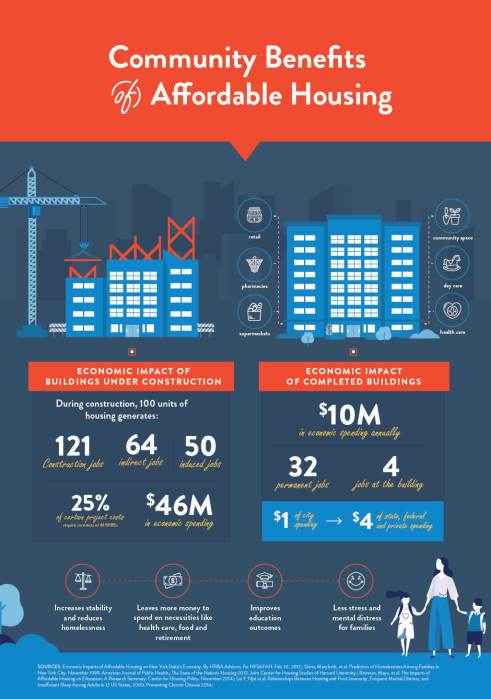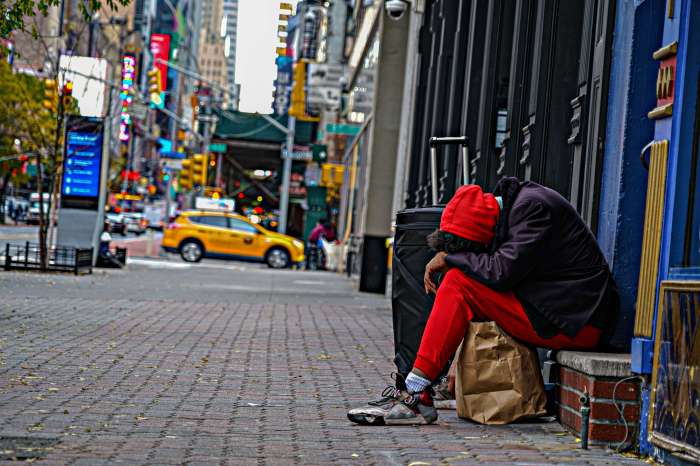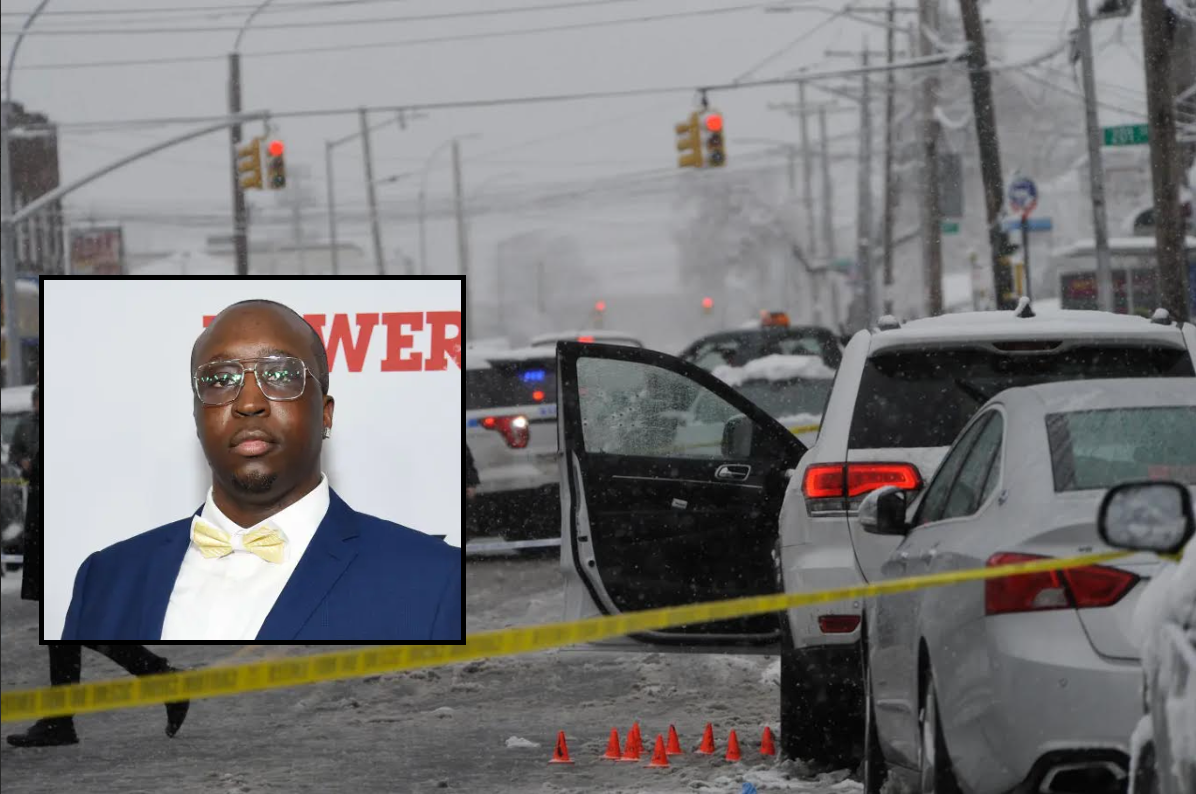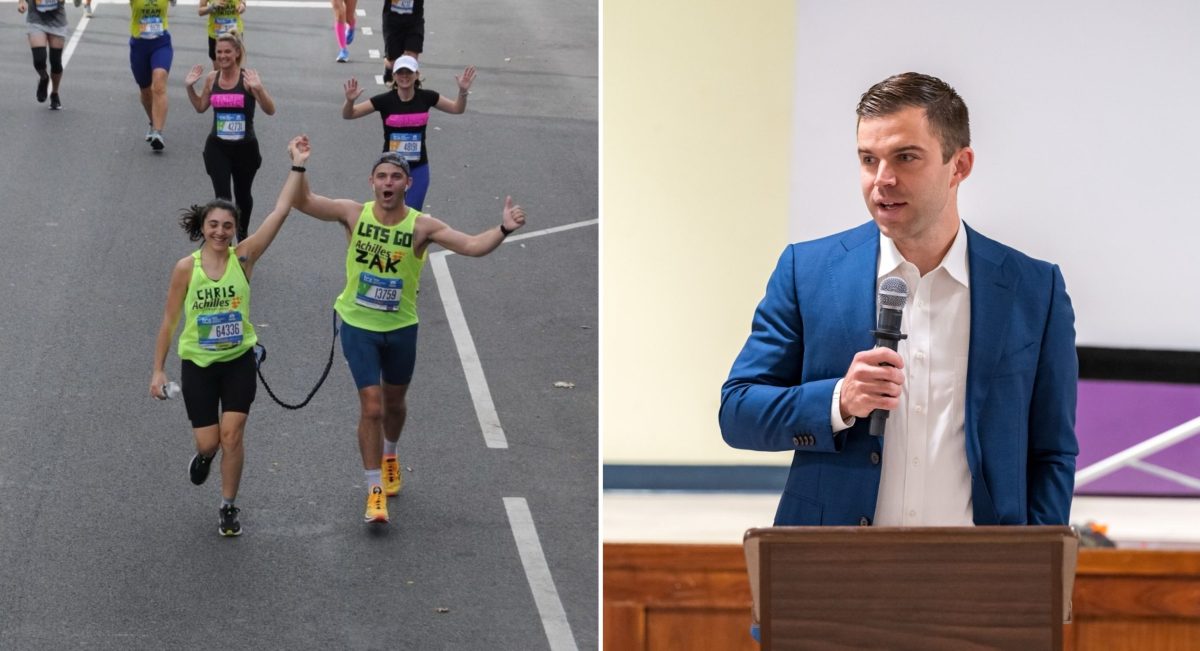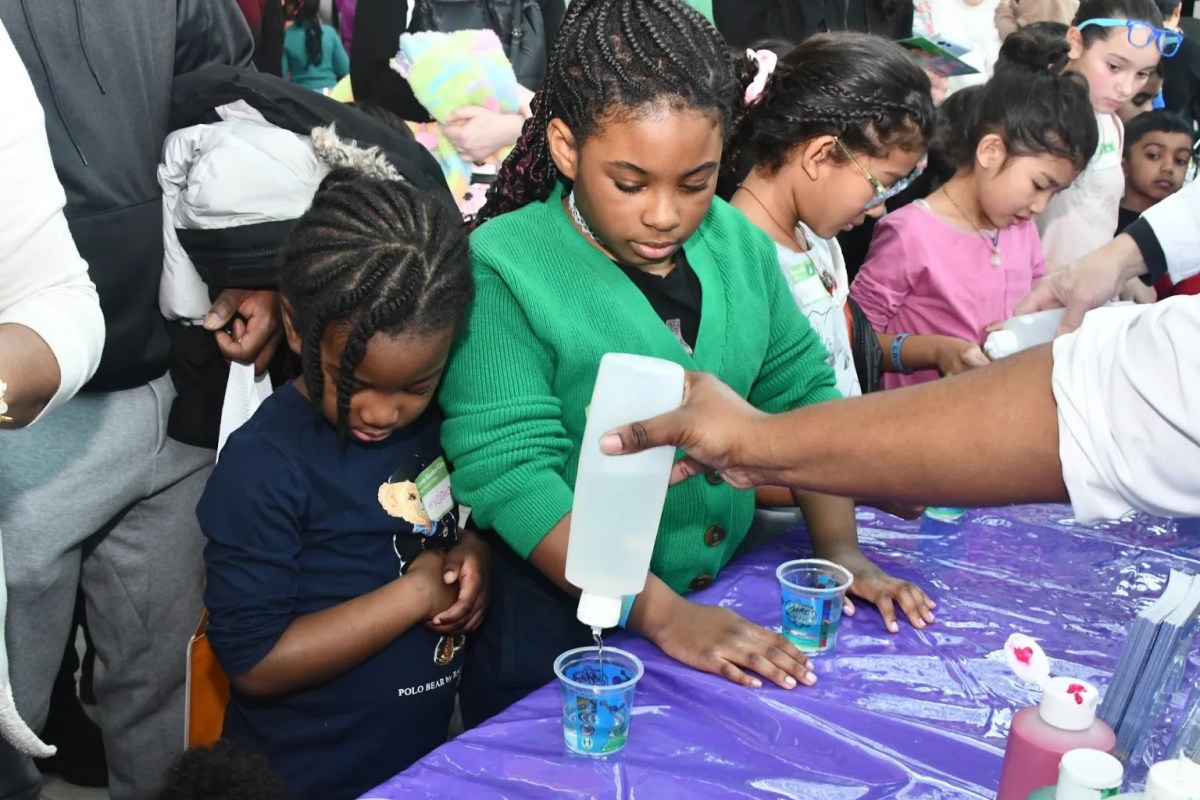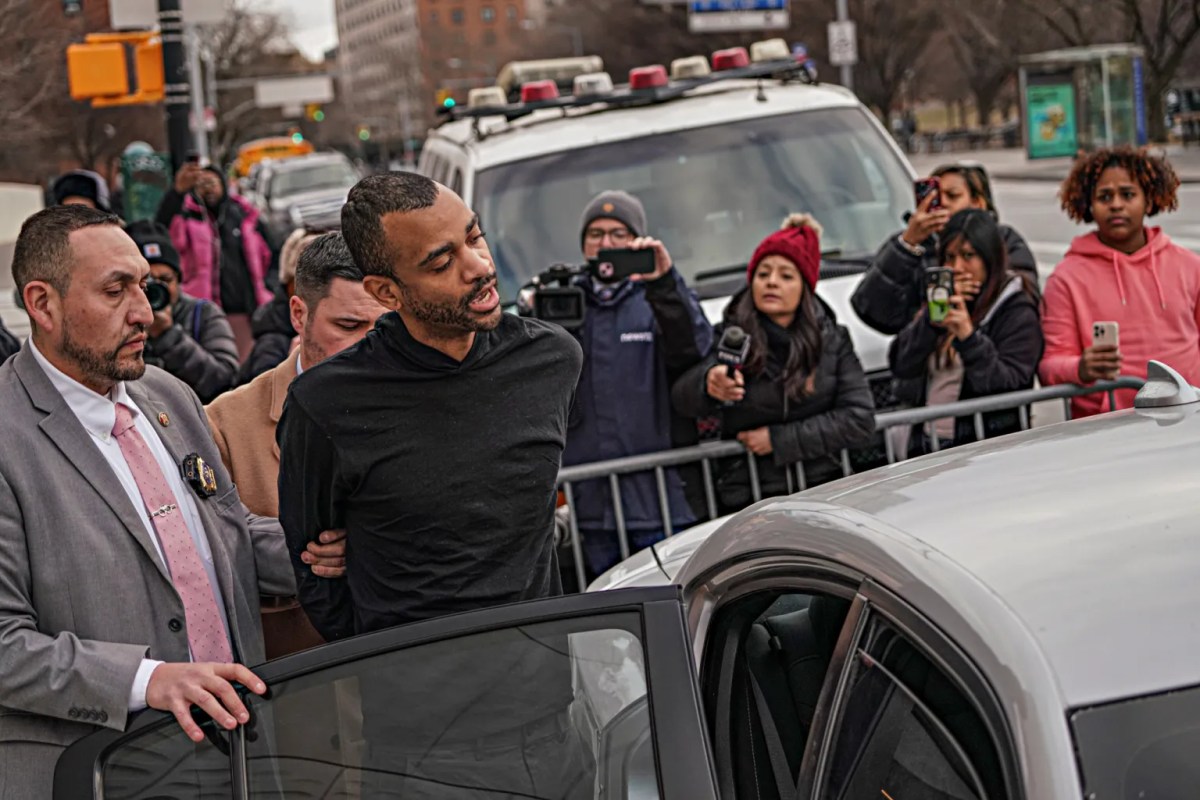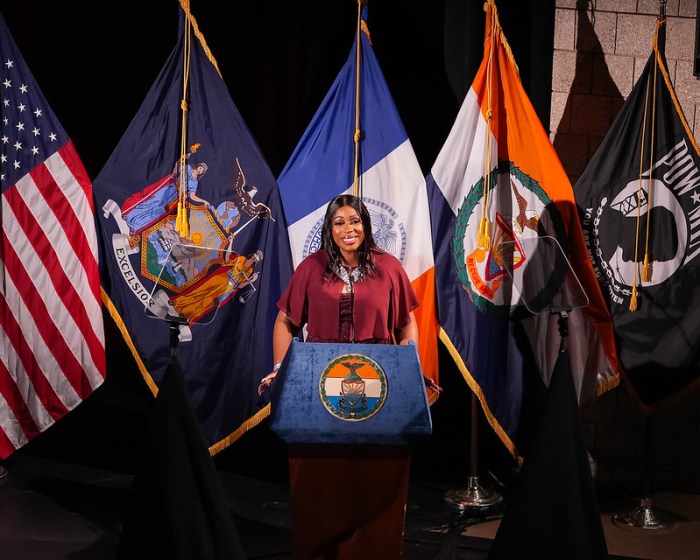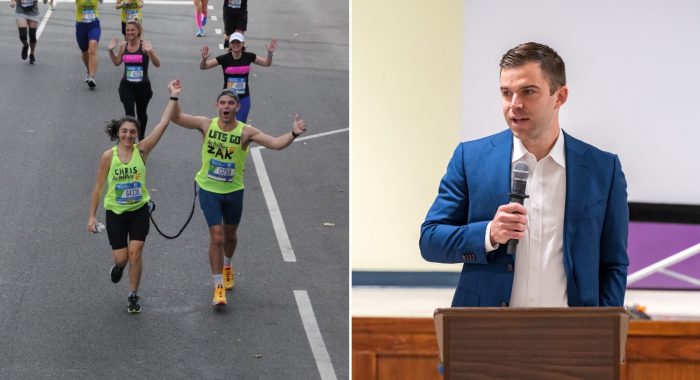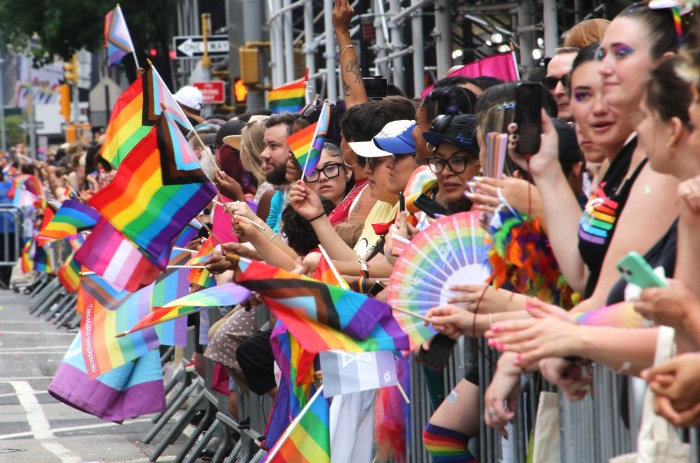Anthony Simmons has lived in a homeless shelter on Wards Island for five years, and he says as time has passed, the conditions have progressively worsened — especially after the COVID-19 pandemic hit in the spring of 2020.
Simmons, who is wheelchair-bound, said that dozens of homeless individuals with disabilities at the shelter are forced to share two bathrooms and one shower that are grossly infested with cockroaches, waterbugs and flies.
The conditions prompted repeated complaints to the city’s Human Resources Administration, but Simmons said they’ve fallen on deaf ears. Too often, he charged, he and other residents have been essentially told they get what they’ve been given, and little more.
“This thing is in Hell Gate Circle and it’s hell to live here. People are horrible, they take all of these clients and treat them like animals. They disrespect us and they do not give us mental health services,” Simmons said.“People with mental health problems run around here doing drugs, talking to themselves, getting into problems and being taken out by DSS security. I don’t have mental problems, but there are people here who do, and they are getting worse. They have no staff here that focus on mental health to give them aid or something to help. They are not even taking their medication.”
Simmons was one of the residents at the Clark Thomas Men’s Shelter on Wards Island who spoke to amNewYork Metro and others who participated in a tour of the facility held Monday by homeless rights activist Shams DaBaron and UWS Open Hearts Initiative, along with Public Advocate Jumaane Williams.
The Ride of their Lives
Subways don’t stop at Wards Island, located just off the Harlem shoreline. The only means of connection are a footbridge to the West Side and the Robert F. Kennedy (Triborough) Bridge, which the M35 bus line uses to make regular stops on the island.
Known as the “homeless hero,” DaBaron, along Public Advocate Jumaane Williams, Manhattan Borough President Gale Brewer, and Brooklyn New York City Council member Stephen Levin waited beside the M35 bus stop on East 125th Street and Lexington Avenue on Aug. 30.
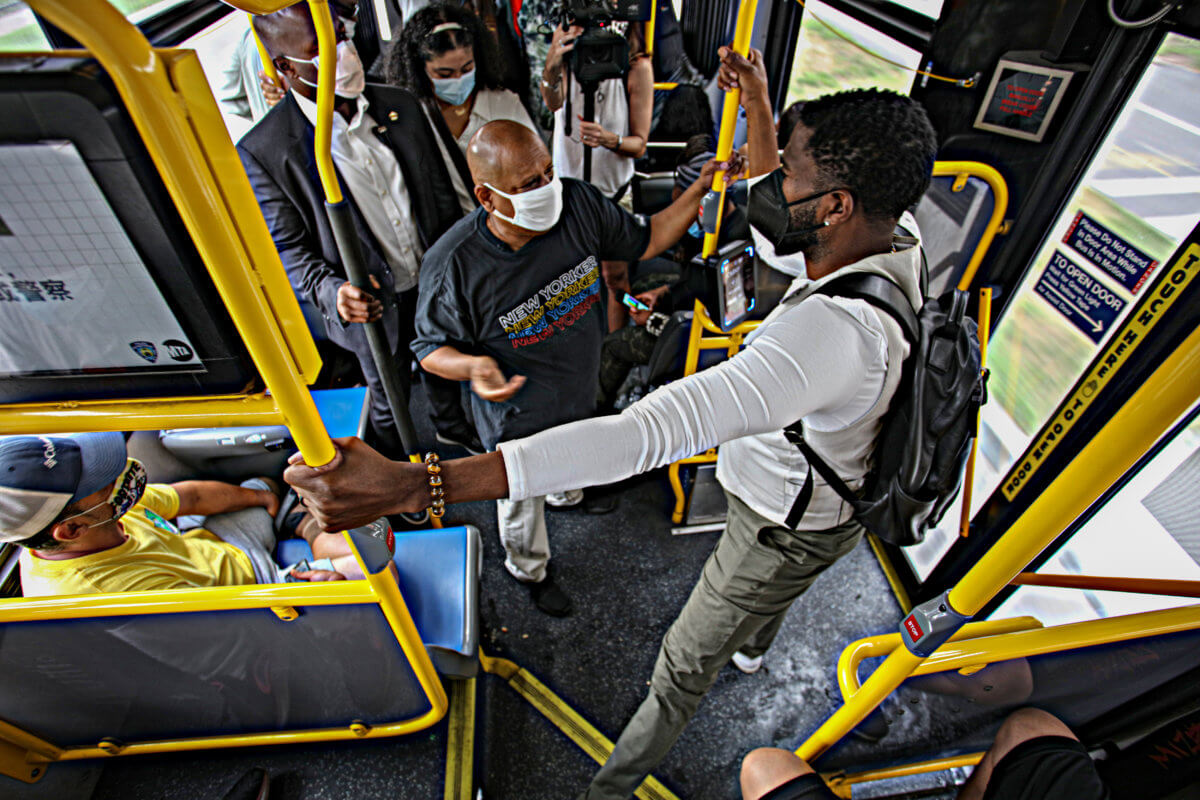
Serving as a conduit between life in congregate shelters and society as most New Yorkers know it, those who travel using the M35 bus say the dehumanization begins with that ride. Many residents told the elected officials riding the bus that it either almost always arrives late or does not arrive at all, and when it does, they are forced into cramped conditions as overcrowded commuters are squeezed together.
On Monday morning, Aug. 30, the M35 missed its scheduled departure time by more than 20 minutes.
Once onboard, residents traveling to the Clark Thomas Men’s Shelter explained to their new riding buddies a variety of horror stories regarding their destination. They claimed that those who lodge complaints with shelter staff are often told to speak with a case worker — something they claim is impossible since many have not been put in touch with one.
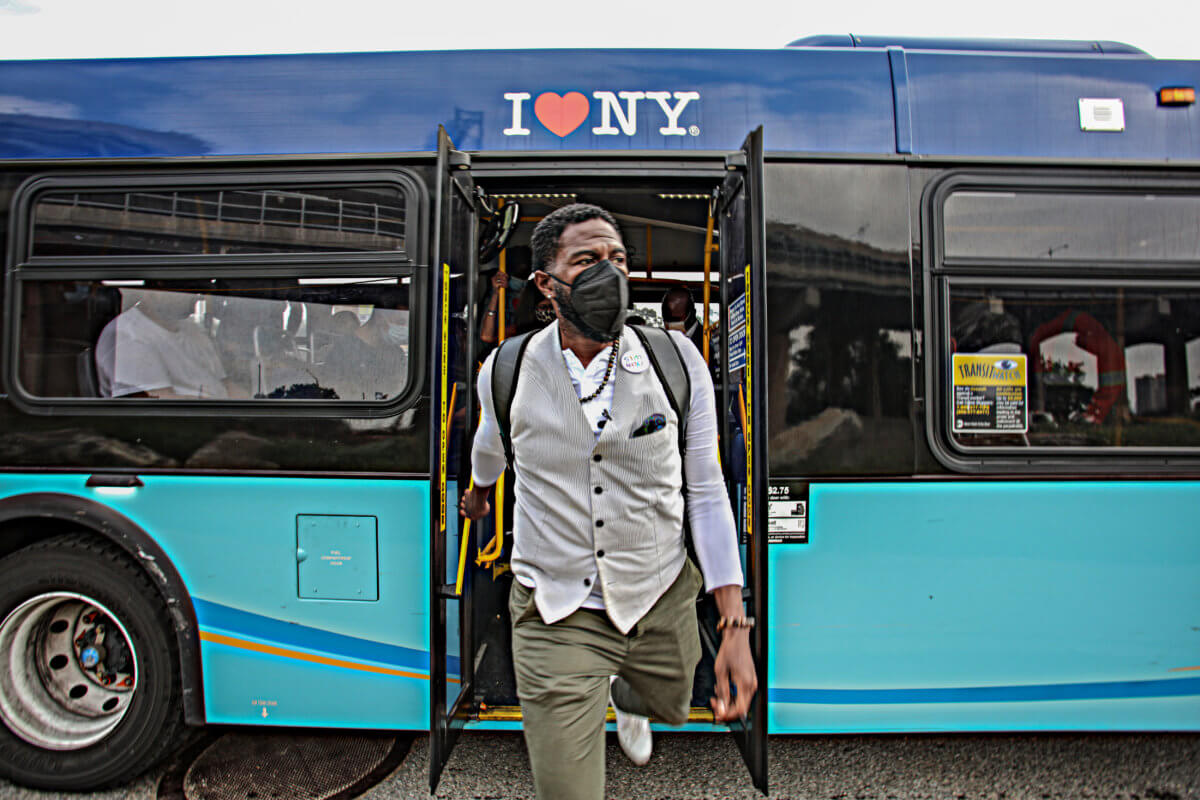
The Arrival
Upon finally arriving at the shelter, DaBaron led the elected officials and others on the tour through the gates and up a path toward a facility he once called home. Many of its current residents greeted the visitors with open arms.
Distraught, a number of shelter residents pleaded for help — citing physical dangers, substance abuse issues, lack of COVID-19 protections, staff neglect, and decrepit conditions.
One individual clung to the entrance railing and decried the environment in which he lives, claiming he experienced poor ventilation, lack of air conditioning, and claims that contact tracing has not been implemented.
Today @homeless_hero and @JumaaneWilliams visited a #homeless #shelter in #WardsIsland. One resident cried out about the inhumane conditions. #news pic.twitter.com/34Uayj3yLU
— Dean_Moses (@Dean_Moses) August 30, 2021
“The building is horrendous! Take a video of the bathrooms in there. Horrendous! Humans shouldn’t live like this. It’s worse than jail,” the man bellowed, “People should never live like this. It’s wrong. Aggregate housing for the homeless is wrong. It’s wrong. Send us back to jail. There is bail reform to send us back in here—it’s another jail!”
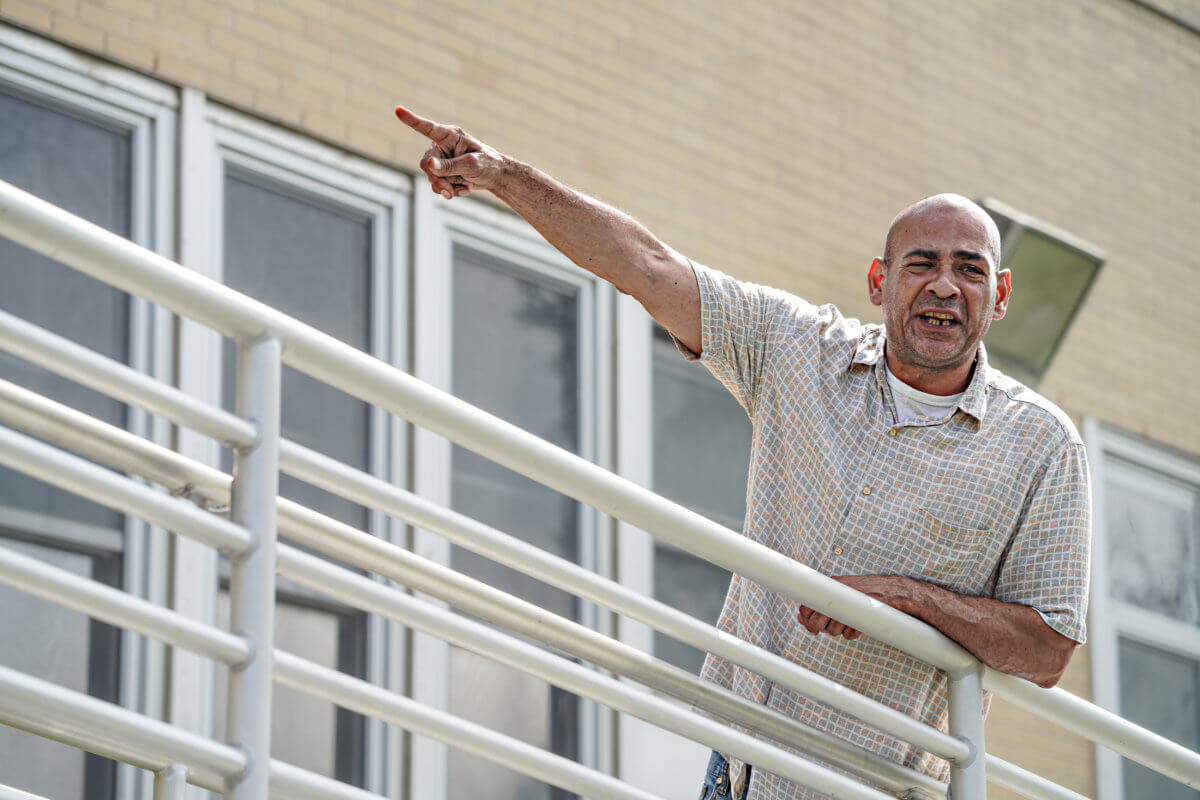
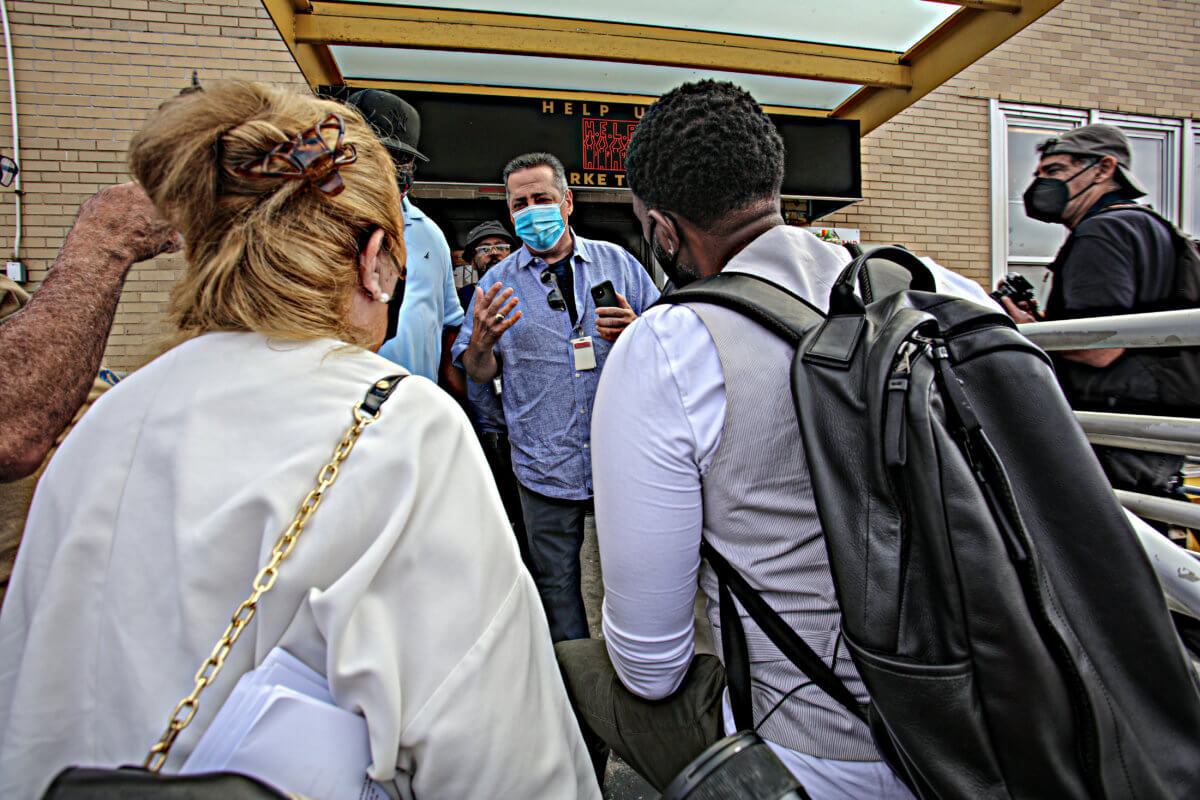
As DaBaron, Brewer, Williams and Levin were granted access to tour of the depths of the shelter, press outlets were forbidden from documenting the scene inside. amNewYork Metro used the opportunity to instead with several residents.
However, thanks to the account of those spending each day at the Clark Thomas Men’s Shelter, residents provided this reporter with photographs while speaking of years living inside. Dozens of men in wheelchairs, those using the assistance of canes, some blind, and more shared that they feel they are looked upon like beasts.
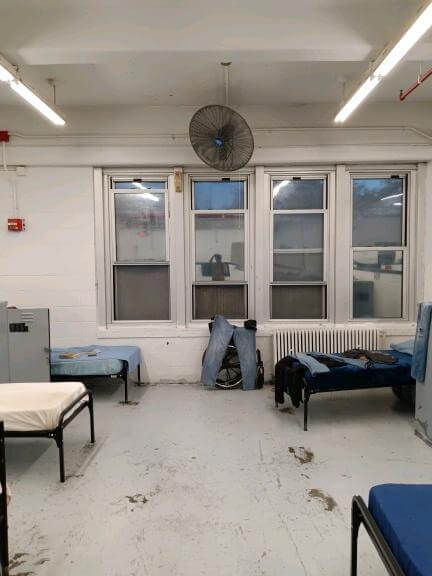
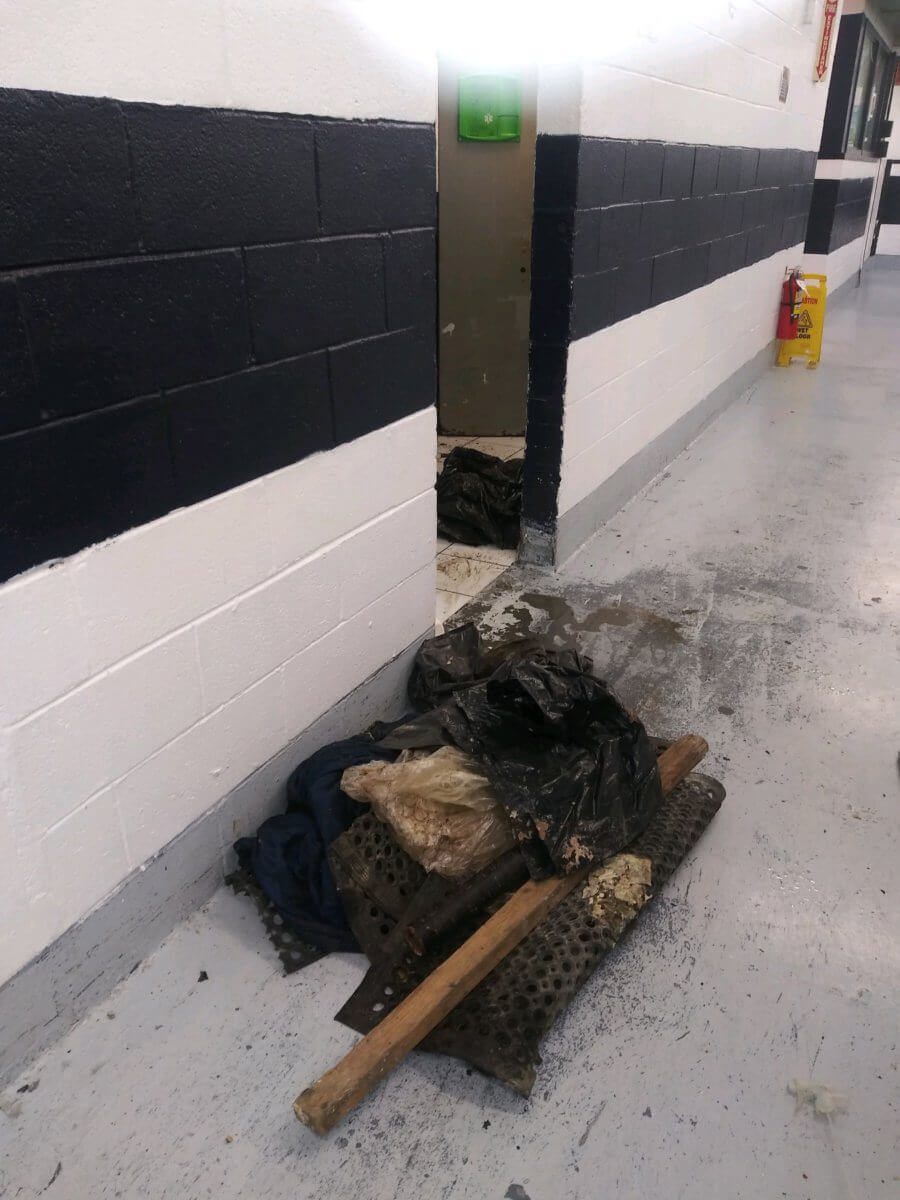
The Verdict
Residents of the Clark Thomas Men’s Shelter gathered around the Public Advocate and company after they emerged from their tour. With NYPD officers assembling at the front gate and parking lot to observe the conference, DaBaron became emotional returning to the shelter.
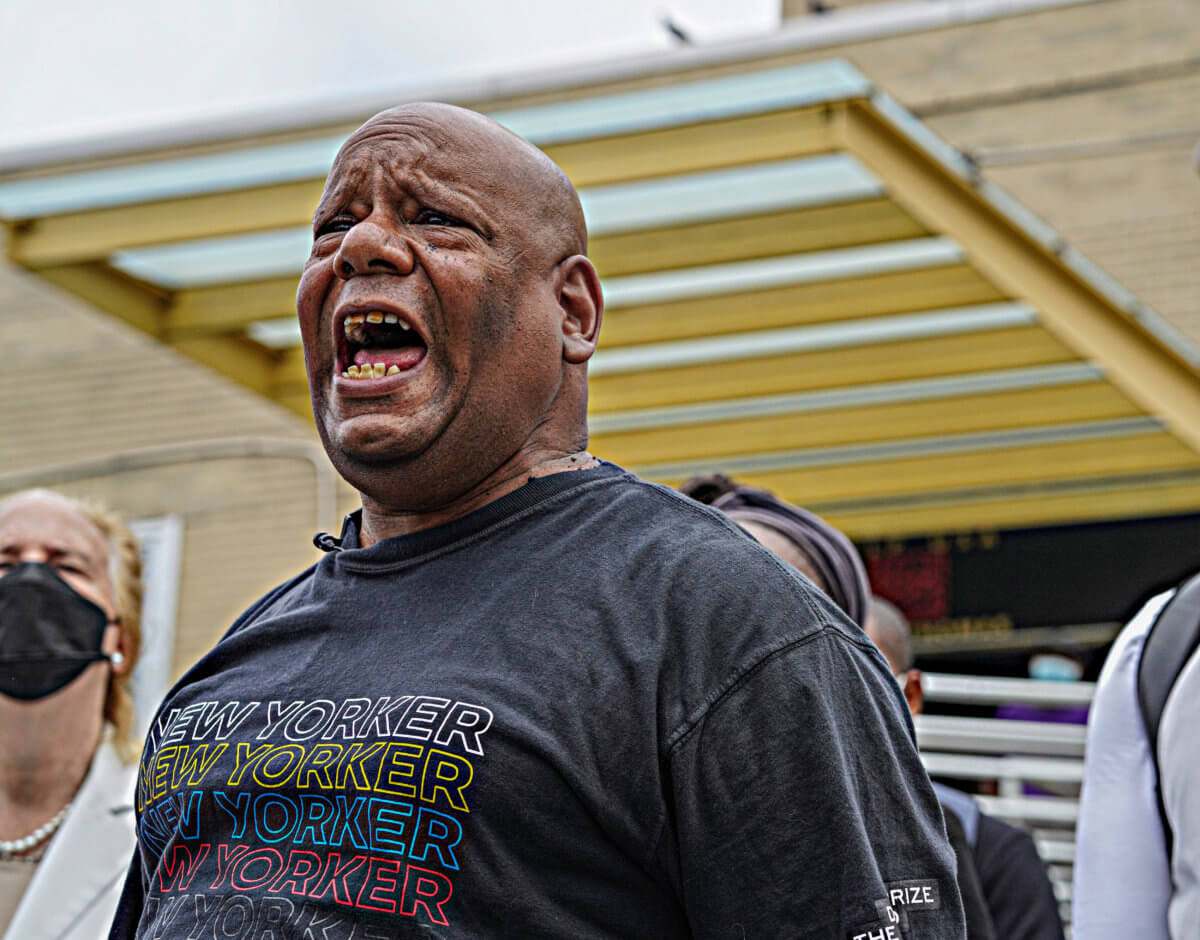
“Even now as I stand before you, it bothers me. And I don’t know what we’re going to do beyond this, I don’t know what y’all experience going in there,” DaBaron said. “But my hope, honestly, is that we develop the courage and the boldness to go to our offices and call for the ending of the use of these congregate shelters, like this. They shouldn’t be in places like this.”
DaBaron said the Clark shelter “fosters death and destruction, perpetuates mental illness, substance abuse disorder [and] health issues.”
“We need shelter, and we should have a right to shelter. But that does not give you the right to dehumanize us,” he added. “That does not give you the right to put us here and warehouse us for years, where we lose our sense of self, we lose our sense of wanting to go out and be productive members of society.”
Williams said he found the lack of on-site services and COVID-19 protections to be most troubling.
“I will say there seemed to be some staff that really did care about folks that were here, I would have to agree that there’s not enough services on site, that seems to be number one,” Williams said. “We want to make sure people go back better than normal and congregate shelters are not the way to deal with the homeless and housing issues that we have in the city of New York.”
In response, DSS-DHS assert that since the onset of the pandemic, they have implented safety protocols to keep those living within shelters safe, protocols they believe have saved lives.
“DSS-DHS has worked together with provider partners throughout the pandemic to protect our clients and implement safety protocols, like proactive COVID testing, vaccination, isolation/quarantine services, and more–and those efforts have paid off, with just 0.4% of the City’s total COVID-19 cases occurring among New Yorkers experiencing homelessness.
More broadly, this Administration has invested hundreds of millions of dollars in our shelters and shelter providers to address the challenges that we inherited following decades of neglect and underfunding because we know the comprehensive transformation we’re focused on achieving doesn’t come free, including on Wards Island in partnership with HELP USA,” a DSS-DHS spokesperson told amNewYork Metro.
